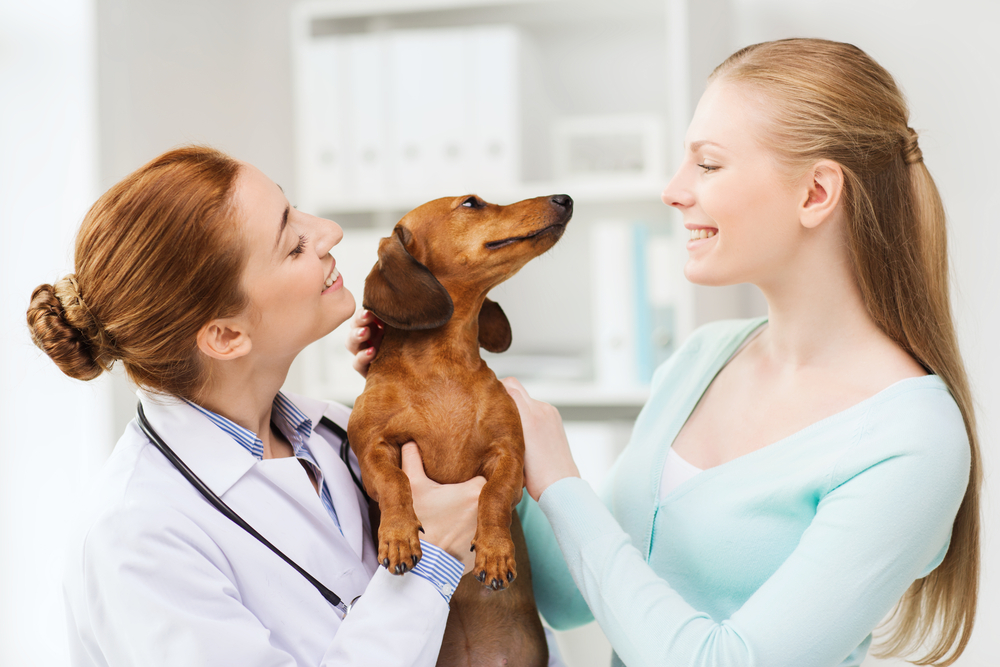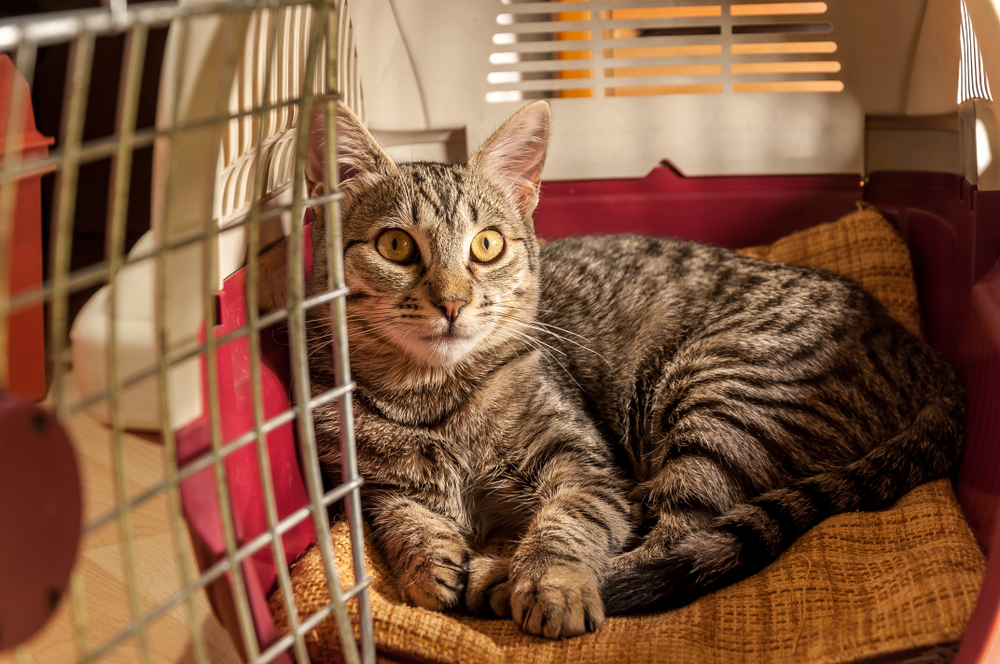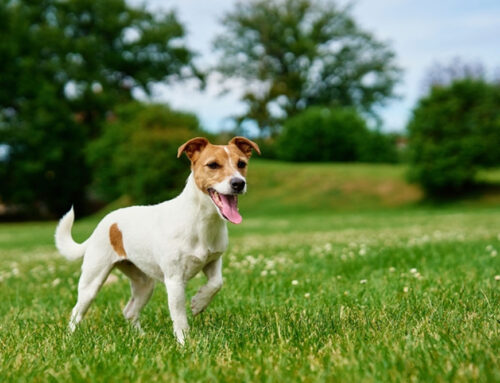Visiting the veterinarian may not be your pet’s—or your—idea of a good time, but routine care is essential to a long and healthy life. Skipping annual wellness visits because your pet experiences fear and anxiety may actually worsen their feelings toward us over time, if they only see us when they need treatment.
Rather than make your pet suffer from a lack of veterinary care or unhealthy stress and anxiety, let’s do what we can to minimize your pet’s apprehension. Here are 10 easy steps your south Austin veterinary team at Oliver Animal Hospital recommends that you can take at home ahead of time to help ensure a stress-free visit.
#1: Help your pet learn to handle being handled
Dogs and cats can find physical restraint and manipulation threatening. If you don’t regularly handle your pet at home, begin by gently touching them in exchange for treats. Keep sessions short—only one to two minutes—and start with a well-tolerated area, such as your pet’s chest or back, and then progress toward their ears, mouth, legs, feet, belly, and tail.
#2: Make your cat’s carrier a cozy cave
If your cat has learned to hate their carrier, their veterinary stress begins long before they arrive at the hospital. Start over with a two-piece crate that you introduce to your cat in stages—first the bottom half lined with cozy bedding, then a little cave where they can find hidden treats and toys, and finally as a secure home away from home during brief and gentle transport.
Station the carrier in your cat’s favorite area, spray feel-good pheromones on the bedding, hide fun surprises inside, and make their first “trips” uneventful (e.g., a walk around the house, or a car ride to the end of the street), and your cat may not want to leave their new home.
#3: Reduce your pet’s travel stress
Don’t feed your pet prior to their appointment. Motion sickness and anxiety can trigger nausea and vomiting, and worsen their stress. Try taking short, uneventful “practice trips” to help your pet overcome this problem, and learn that the car doesn’t always equal a trip to the veterinary hospital.
When you travel, secure your pet in a crate, carrier, or seat belt, which will help them feel safe, protect them in an emergency, and prevent them from becoming a distraction while you’re driving.
#4: Schedule strategically to minimize your pet’s stress
Early morning hours at our hospital are typically the quietest. We recommend scheduling anxious or fearful pets as early as possible, to reduce visual and noise stimuli that may worsen their condition. Morning appointments are also more likely to run on time, minimizing delay-related stress.
#5: Notify our team about your pet’s anxiety
Especially during curbside service, please communicate your pet’s behavior history (e.g., anxiety, fear, or aggression) and current emotional state to our team members. This should begin when you schedule your pet’s appointment. We also ask that you list your pet’s anti-anxiety medications and the time of their last dose on the space provided on our online check-in form. While we strive to provide each and every pet with a low-stress experience, notifying us about your pet’s stress can help us provide individualized care, and ensure each step we take is considerate and comforting.
#6: Weigh to go—teach your pet to voluntarily get on the scale
The scale can be scary for some dogs and cats, and set the tone for the entire veterinary visit. Teach your pet to go to a low body target with positive reinforcement training. This behavior is also known as stationing or “place training,” and helps communicate clear expectations to your pet and builds their confidence. Although this tutorial uses a towel or bed, the behavior will generalize to many surfaces and objects.
#7: Provide your pet with positive distractions
Consuming food is a natural stress-reliever, and helps us communicate effectively with pets through positive reinforcement. Introduce some food toys and flavor combinations at home to learn your pet’s preferences, and then bring their favorites to the appointment.
A Kong or lickable mat filled with soft foods (e.g., wet food, low-fat plain yogurt, xylitol-free peanut butter, or cheese spread) can effectively distract your pet during their physical examination, while a puzzle toy or snuffle mat can reduce stress while they wait in the car or the exam room.
#8: Teach your dog to calmly accept a muzzle
Muzzles have a negative connotation, but they are essential for protecting pets and people. All dogs—including those who are well-behaved in veterinary situations—should be taught to wear a muzzle, which can be necessary in an emergency situation. By teaching your dog that wearing a muzzle is simply an opportunity for treats and games, we can replace fear and panic with willing cooperation.
#9: Ask your pet’s veterinarian about pre-visit medications
Pets with severe veterinary anxiety or fear-related aggression can benefit from pre-visit pharmaceuticals (PVPs). These prescription medications are administered prior to a stressful situation or event, and work by safely altering your pet’s brain chemistry to increase serotonin or depress certain parts of the central nervous system. Some may provide mild sedation.
#10: Keep calm to keep your pet calm

Your pet looks to you for guidance and can sense your energy, so practice a positive attitude about your pet’s upcoming veterinary visit.
With some thoughtful preparation and help from your friends at Oliver Animal Hospital, we can ensure your pet has a successful stress-free veterinary visit. Contact us for more information about at-home preparations, and to schedule your pet’s next appointment.







Leave A Comment